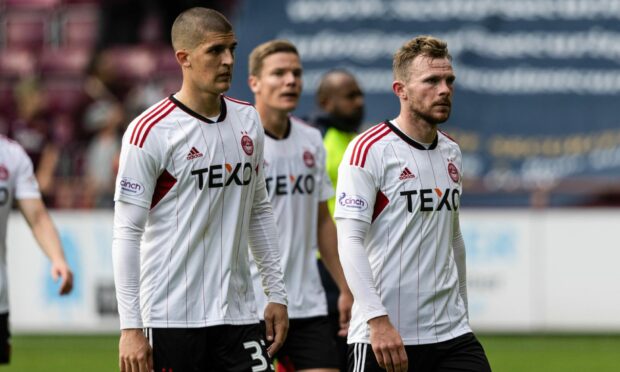A lack of cohesion, admitted Barry Robson. That much was obvious even to the untrained eye.
Watching the 2-0 defeat at Hearts, it can hardly have been unexpected.
Aberdeen’s reshaping of their squad came with a radical methodology, and it reached its high water mark on Saturday when, for the first time in club history, the starting 11 contained players of 10 different nationalities.
Including the bench, 13.
This lack of commonality was most apparent in the Dons’ back five.
All new to the club, recruited from five different leagues and styles of football.
Perhaps least explicably, all of them sourced from clubs who spent last season playing with a back four, save for the rule-proving exception of a lengthy period in which Richard Jensen’s three-at-the-back Gornik Zabrze plunged into the relegation zone before switching to a four and rocketing into the top six.
Questions remain over new recruits following Aberdeen rebuild
Casting the recruitment net wide can, of course, result in a tastier catch, but only if the nutritious species are correctly sifted from those which are exotic but inedible.
Though each of Aberdeen’s new signings may have admirable qualities in their own right, asking them to essentially learn a new shape at the same time as getting used to new teammates and opponents alike is proving a major stretch.
Six consecutive games against full-time opponents have each seen the concession of two or more goals.
To some extent the summer splurge was, through the loss of so many, unavoidable.
As yet, however, little evidence has been gathered that the replacements were sourced primarily for their fit in the wider machine, rather than the paper specifications of each individual component.
That may well come, with time. It had better, for the sakes of many.
But how much of Aberdeen’s season is lost in the meantime will determine whether it was worth the cost.

Conversation